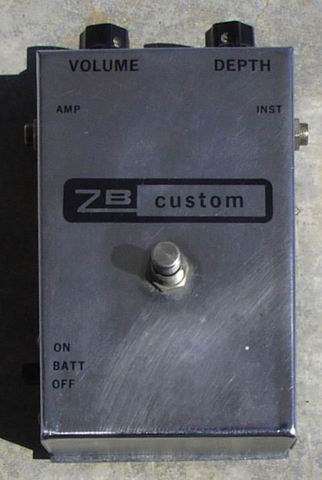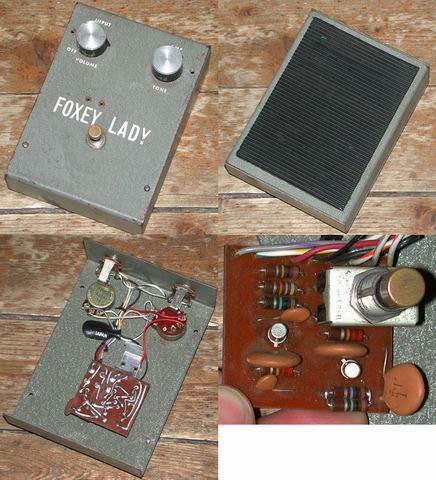From The EH Man's Electro-Harmonix Extravaganza!
Of EH, Mosrite and Guild
This month's article is unusual in that it is actually a history of a Guild
effect. Along the way, though, it became linked forever with Electro-Harmonix
and even the Mosrite company. So, without further ado, let's look at the EH
Axis, the Mosrite Fuzzrite, and the pedal the links them all: the Guild Foxey
Lady.
We'll start at the beginning with the Mosrite Fuzzrite, (Fig. 1) a
very basic 2-knob fuzztone. It was designed by Ed Sanner, originally of Mosrite
and later of Rosac (Nu-Wah, Nu-Fuzz, etc). Ed's original plan was to make a fuzz
for a friend of his, steel player Leo LeBlanc. Leo used a Maestro Fuzztone on
his steel, but it wouldn't work on cold concrete floors. When the transistors
got too cold, they would shut down and refuse to pass any signal (if you don't
believe that, try spraying the inside of one with freeze- spray while playing
through it). Semie Mosely liked the fuzz, so he put it into production. It
turned out to be a very good product for Mosrite, selling about 1000 units a
month. Mosely made about $10 profit from each unit, so it definitely kept him in
Pop-Tarts for a while. The layout had the two controls (Volume and Fuzz) at the
upper end of the pedal, the jacks on the sides, and a power switch on the lower
left side. Originally, it was constructed of discrete components, but later an
encapsulated circuit was used that was made for them by Sprague. Even later, it
was made with discrete components once more, sometimes at Mosely's kitchen
table.
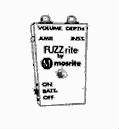
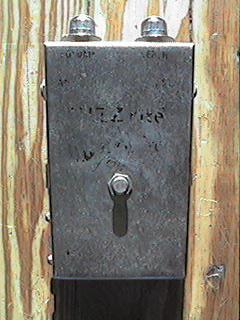
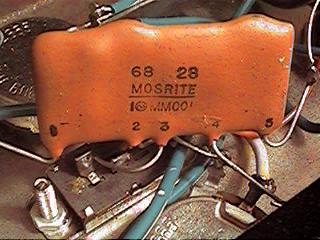
Around 1967, Mosley came back from the NAMM show with an order from the
Guild company to build Foxey Lady fuzztones for them. Guild was a company that
was well known for its guitars, but they just didn't want to go to the trouble
of tooling up for fuzzbox production. What Mosrite did for Guild was simply
repackage the Fuzzrite by moving the controls and power switch to the top of the
pedal, putting the power switch between the Volume and Fuzz controls. They made
approximately 1000 of these units for Guild until Mosrite suffered financial
problems and went under for the first time.
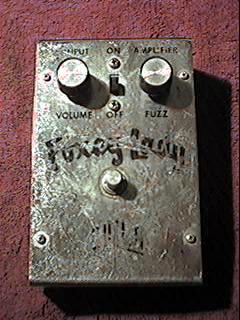
While we're on the
subject, another interesting variation on the Fuzzrite was the ZB Custom fuzz,
which was probably produced in the mid 70's. At the time, Mosrite was sharing a
building with ZB Custom, a manufacturer of steel guitars. Ed Sanner believes
that the ZB Custom fuzz was either made for them by Mosrite or was made by ZB
Custom from units they found in the building after Mosrite's departure.
Appearancewise, it is identical to the Fuzzrite except for the name.
Interestingly enough, I'd never heard of ZB Custom until one of these pedals
came in for repair. The next day, I ran across a ZB Custom pedal steel at a
local music store. Karma abounds!
Back to Guild. With Mosrite's demise they began casting
about for a new manufacturer of the Foxey Lady and happened upon Mike Matthews
and his newly formed Electro-Harmonix company. EH's version of the Foxey Lady
was simply a renamed version of their very first effect, the Axis fuzztone. It
had a 2 transistor circuit designed by Bill Burkoe, a tech from 48th St. in NY.
The controls consisted of Volume and Fuzz, with a power switch located on the
back of the Volume control (Fig. 4). An interesting feature in the construction
is the use of a DPDT footswitch soldered directly to the circuit board. Unlike
later EH products, this greatly reduced the number of loose wires and made for
sturdier construction. Instead of being wired for true bypass, however, the
switch was set up so that one side switched the output of the circuit while the
other side switched power to the circuit on and off. The same sort of switching
arrangement was used in the Mosrite Fuzzrite and the Mosrite-made Guild Foxey
Lady. Neither pedal was made in huge quantities, but the Axis seems to be rarer
of the two. Mike says that the Axis was created to cash in on the big fuzztone
craze of the 60's and estimates that only about 2000 - 3000 Axis and Foxey Lady
pedals were manufactured before the introduction of the Big Muff Pi.
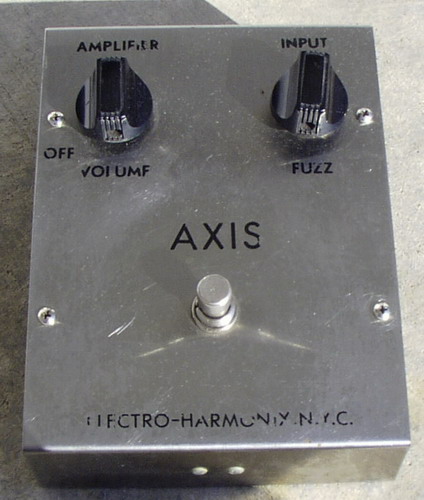
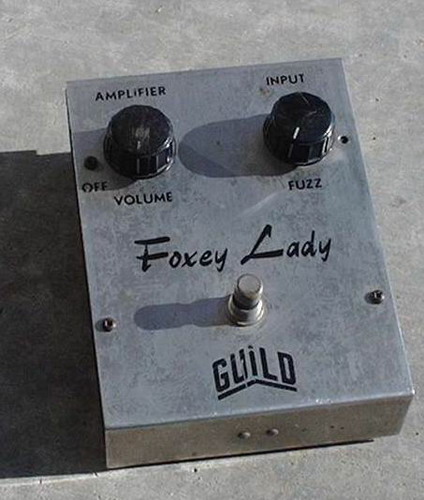
When EH came up with their popular Big Muff Pi
circuit, they changed the Foxey Ladys to use this design and discontinued
production of both the 2-knob Foxey Lady and the Axis. Again, these are
identical to Big Muffs internally and are available in two versions: a
triangle-knob configuration which is equivalent to the earliest Big Muffs
(series 1) and a straight-knob version equal to the series 2 Big Muff. They
continued with the production of the Foxey Lady until approximately the mid
70's.
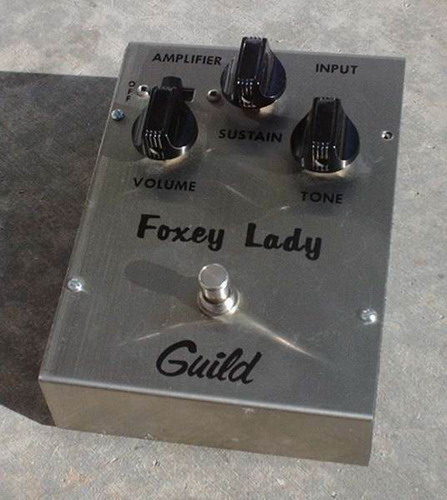
On a final note, take
a look at the photo below. I've seen pics of at least 3 of these. A pic was sent
to me years ago by a dealer friend and this better pic was recently sent to me
by the current owner. What's the deal with these? They look similar to EH-made
Foxey Ladys, but the circuit board is different. Anybody got one I can examine
closer??
It's possible that there are other variations on the
Mosrite Fuzzrite just as there are on the Big Muff. If anyone has a fuzz that
they suspect may also fit in this story, please contact me.
Thanks to pedalman.com for the photos of the
Mosrite-made pedals and Kevin Macy for the weird Foxey Lady pic.




